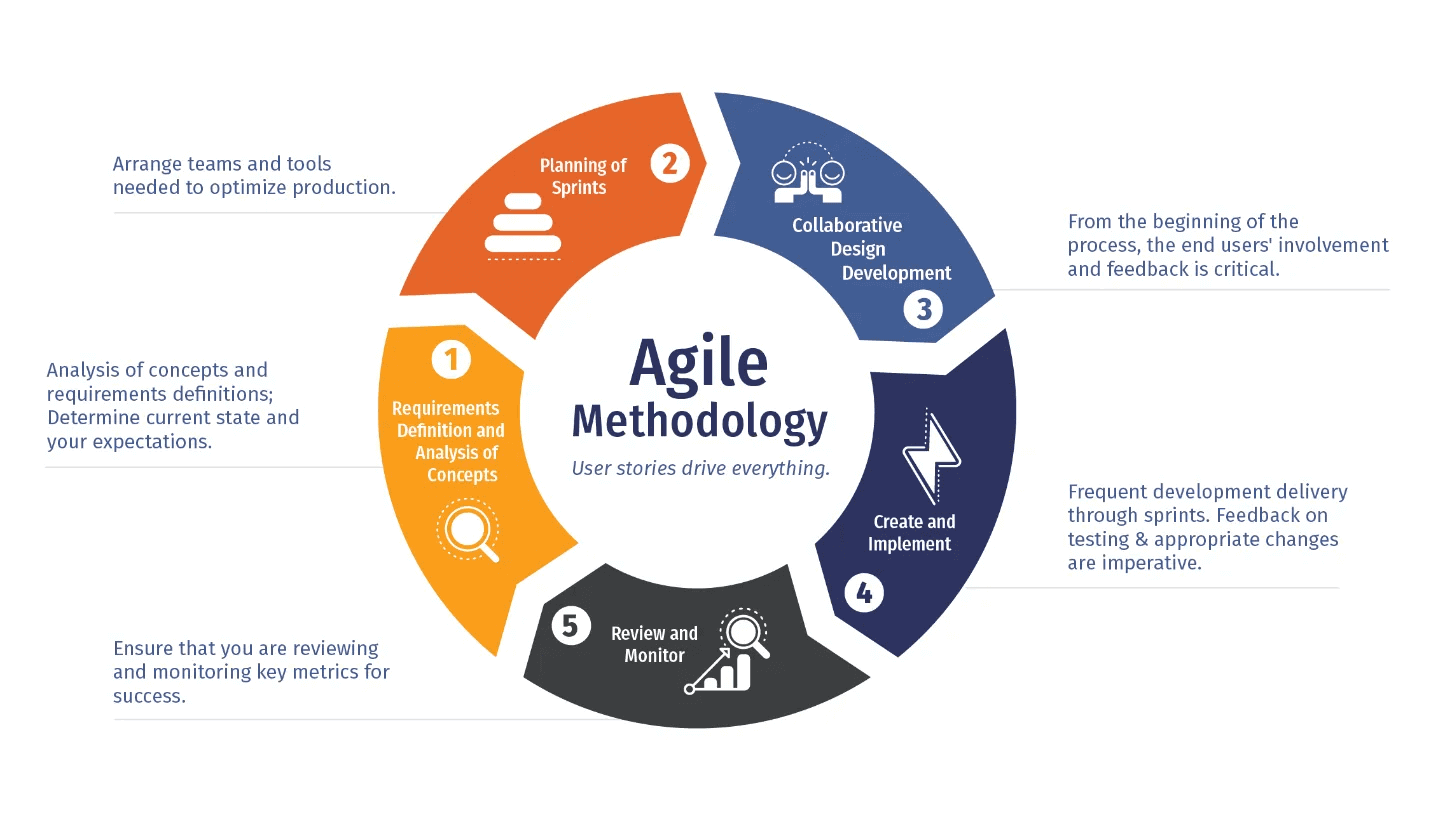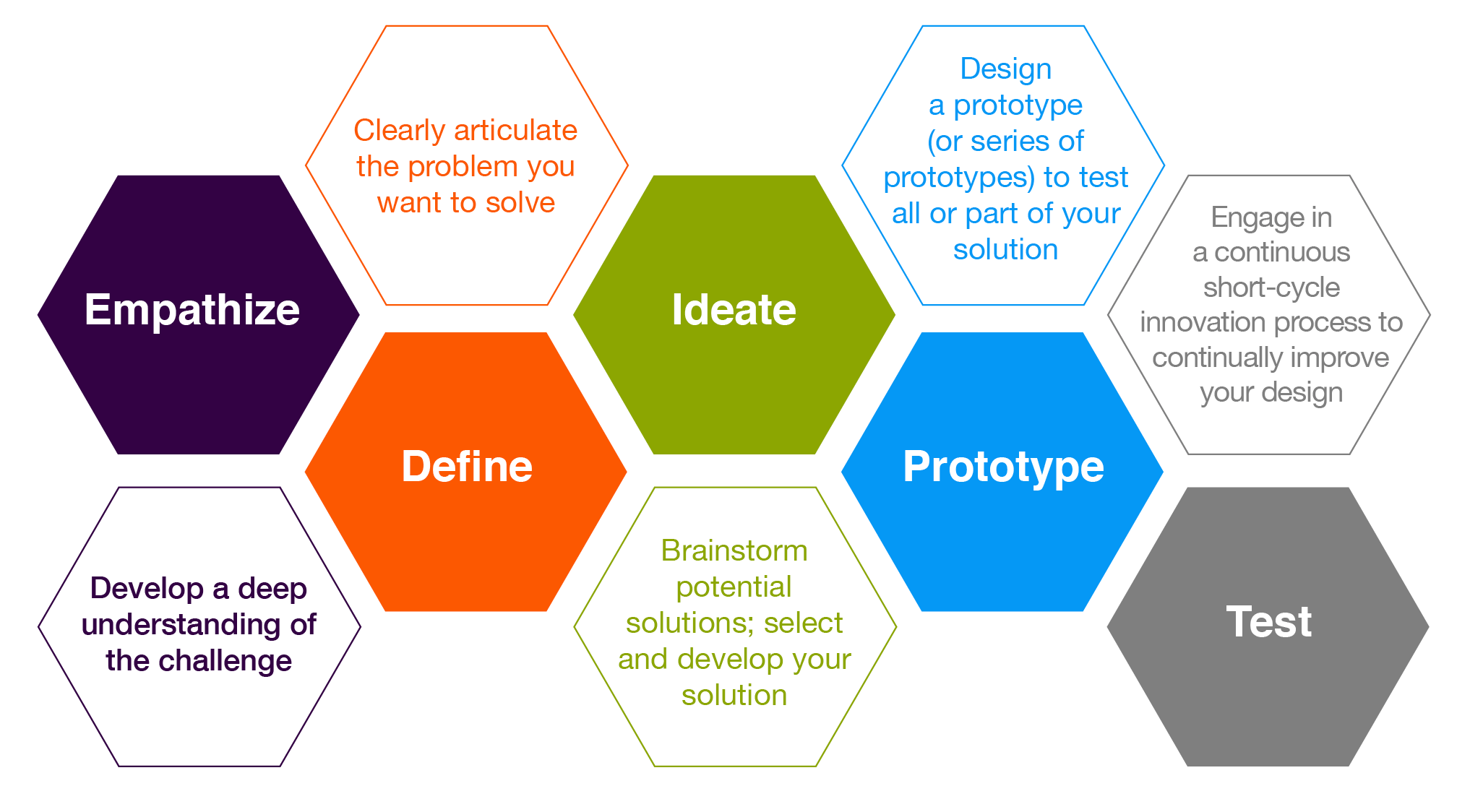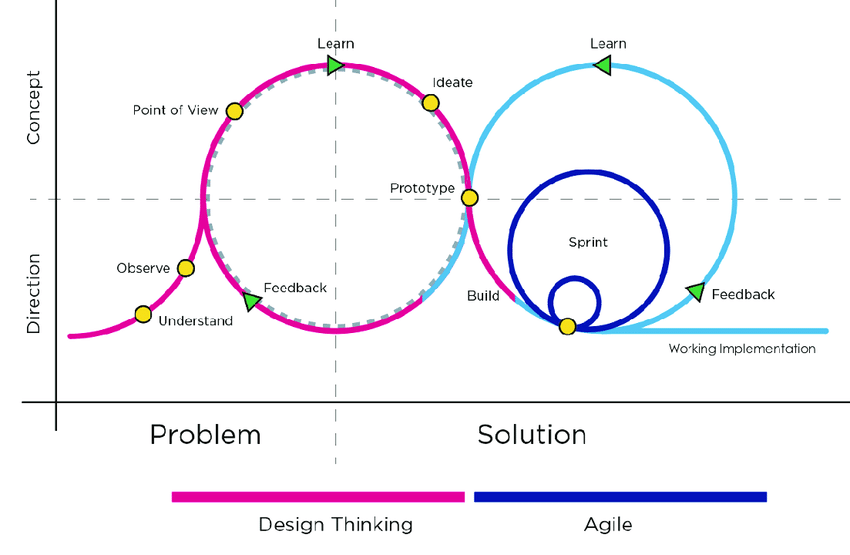Design Thinking Can Improve Your Agile Process - Here’s How
In today’s competitive world, every organization is striving to offer the best products and services to meet customers’ needs. However, about 70% of projects fail to deliver what was promised. So, what project management approach should you opt for?
As a well-versed method, Agile is routinely practiced in the software industry. Multiple organizations have accepted this iterative project-management approach to provide the best solution for their consumers. Design thinking shares philosophies with Agile, such as gathering customer feedback, using an iterative design approach, helping teams avoid mistakes, and providing a more effective solution.
Combining the Agile process with design thinking provides more efficient, innovative, and customer-focused solutions. A multi-disciplinary team using design thinking within an Agile process will deliver innovative and customer-focused solutions to the market quickly.
To understand how design thinking can improve your Agile methodology, let’s first explore the basics.
What Is Agile?
Agile is an iterative, time-based approach to project management and software development. It allows you to deliver the best solution to your customers in the fastest way possible. The Agile method enables you to stay responsive to change, so issues can be continuously monitored and addressed throughout the development cycle without waiting for the final deployment.
Various types of Agile frameworks practiced include:
- Scrum
- Crystal
- Dynamic Systems Development Method
- Feature-Driven Development (FDD)
Each approach is based on the main Agile principles. Throughout the process, the development team shares working demos with users to gather feedback and modify accordingly to provide the desired outcome.
What Is the Agile Process?
In a traditional waterfall model, the scope of a project (or what needs to be done) is seen as a whole picture. And, if the final outcome doesn't work as assumed, the whole project needs to be started again from scratch. It is often highly complex to rectify everything, requiring a major effort and increasing cost and time.

Source: nvisia
Opposed to the waterfall model, the Agile process is based on dividing the whole project into steps; everything becomes lighter, more practical, and more flexible. With the Agile process, you can:
- Involve end-users as active participants in the development process
- Communicate frequently with the users to gain feedback and maintain transparency
- Have more flexibility to make changes with fewer painful setbacks
- Minimalize the possibility of errors in the final product
- Conduct product trials from the first phase of the development
- Reduce the development time and cost
The main goal of Agile is to meet market and business needs as well as deliver high-quality solutions quickly to the customers.
What Is Design Thinking?
Consider Agile an approach to problem solving and design thinking an approach to problem finding. Design thinking is an iterative methodology of developing new ideas, challenging assumptions, and redefining problems; it allows organizations to solve problems, which leads to better products, services, and internal processes.
Design thinking is user-centric and focuses on identifying alternative solutions to offer the best service or product to meet users' needs. It allows you to redefine your product or service strategies to maximize customer satisfaction. Design thinking helps you to:
- Identify unmet needs of customers
- Minimize risk factors associated with new ideas
- Offer solutions that are both innovative and incremental
- Boost user satisfaction, and retain existing customers
There are five design-thinking steps.
Step 1: Empathize
Design thinking starts with understanding people and their behaviors and motivations. By empathizing with your customers, you can better recognize and understand their pain points, get a more in-depth insight into the actual problems, and find better solutions to efficiently meet their needs.
Step 2: Define
After gathering real insights about users' needs, create an actionable problem statement to define the right challenge. By analyzing and combining insights, you have to reach a concrete conclusion about your end users' main problem, so your team can come up with innovative ideas and solutions.

Source: The Center for Innovation in Teaching & Learning
Step 3: Ideate
When you have a clear problem statement, you and your team have to be creative and find an effective solution. You can brainstorm, mind map, or sketch an innovative solution different from the original.
Step 4: Prototype
This is the stage of showing your ideas to your customers instead of just telling them. Here your team will produce quick and inexpensive prototypes to provide a snapshot of potential ideas to the user to get their feedback. This helps with further investigation of the potential solutions.
Step 5: Evaluate
As the name suggests, this step tests the prototypes to determine how relevant each prototype is in solving the core problem. Considering the users’ experiences, you might need to iterate and repeat the process until reaching a Minimum Viable Product (MVP).
How Design Thinking Improves Agile Processes
Both Agile and design thinking implement specific rules, frameworks, defined roles, and activities. The thoughtful implementation of these approaches can help your team to align and deliver differentiated solutions to meet consumer needs.
Incorporating design thinking in the initial stage of a project allows your team to gather insights from real-world consumers. Potential user feedback helps your team develop a customer-centric vision. This helps your team create a solution to improve satisfaction and reduce costly redesign cycles later. A survey conducted by Forrester Consulting for IBM reveals that adoption of the design thinking approach can reduce the time for development and testing by about 33%.

Source: ResearchGate
The primary objective of Agile is to satisfy customers. But, if your Agile team becomes too focused on incremental improvements, they might overlook the impact their iterations have on customer experiences. In this situation, design thinking will make your project more successful. It involves a thorough research technique to uncover potential customers’ needs and motivations. It also includes rapid prototyping that allows your team to showcase and test new ideas quickly to get consumer feedback. This helps your find the right solution to address their pain points without investing in multiple development cycles. Satisfying your consumer with the best solution can even open up long-term revenue opportunities from repeat customers. Agile combined with design thinking allows your team to focus on delivering excellent outcomes for your users.
Things To Keep In Mind To Start With Agile and Design Thinking
If you’re embracing the approach for the first time, remember to harmonize design thinking with Agile in each project cycle by implementing a collaboration contract. The contract can be used as a handbook of how the multidisciplinary team will operate. It is also important that team members agree on the contract and act accordingly regarding task duration, changes, and goals.
Consider these three things when leveraging Agile and design thinking for the first time.
1. Take baby steps. To gain experience in using Agile and design thinking together, start with low-risk opportunities. As your capability improves, you can focus on high-value projects and take on more challenging initiatives.
2. Create cross-functional teams. It is good to form cross-functional teams to facilitate the required creativity in designing and developing solutions. Physical co-location of the team with end-users is also vital to promote frequent collaboration.
3. Balance design and development. For teams newly incorporating design thinking, it is essential to understand the importance of each step in the design thinking approach. The team also must be prepared to uncover new user insights and reframe the problems. And, then they have to continue development with a renewed concept.
Case Study: Telecine Play
Let's consider an actual instance of collaboration between Agile and design thinking processes to deliver an innovative and effective solution to the client. Telecine Play was experiencing a high number of user complaints because the customer service center in their app could not handle issues efficiently. The company wanted to redesign the customer service center to provide better service.
The service provider created a project framework combining design thinking and Agile that played a key role in creating a new relationship model with Telecine Play users through the app. Designers and development teams started working together with Telecine Play through the steps of design thinking and prepared prototypes. Simultaneously, the development team started prototyping. Ultimately, everyone agreed on a working model that can meet customer expectations and maintain the quality, speed of release, and innovation.
Here are the key points behind the success of the project:
Starting with Design Thinking:
1) Co-creation: The Telecine Play team was involved from the start, and their inputs were utilized to create the design.
2) Inspirational Talks: Consumer’s pain points were considered, and thoughtful solutions were suggested.
3) A Day in the Life: The designers and developers used the tool to experience the service from a user's perspective.
Then, the Agile Process Model:
1) The developers followed the Kanban method to eliminate delayed deliveries.
2) They created a multidisciplinary team to meet the most diverse demands for reframing customer service and meeting customer deadline expectations.
The combination of design thinking with Agile offers a new way of problem-solving that considers the user's perspective from day one. And, this innovative approach toward product and service development is becoming increasingly necessary. In today's world, users’ demands are always changing and you have to be ready to respond to rising customer demands continually. Incorporation of design thinking and Agile allows your team to rapidly generate new ideas and embrace the type of user-centered innovation that can offer optimal solutions.
Want To Master Agile Processes? Join a Bootcamp Today!